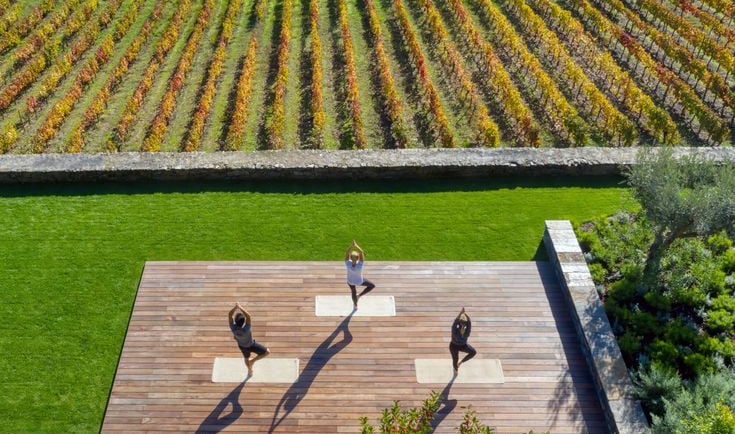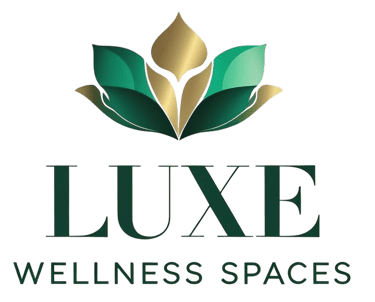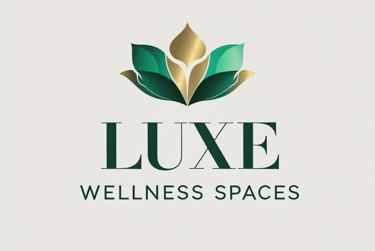The Future of Wellness Real Estate: How Invisible Wellness Architecture is Transforming Property Development
Discover how wellness real estate is evolving beyond traditional amenities to invisible wellness architecture. Learn the latest trends in human-centered design that boost property values and guest satisfaction.
Daryn B
7/9/20254 min read


The wellness real estate market is experiencing unprecedented growth, with projections showing continued expansion through 2028. However, the most significant transformation isn't happening in market valuations—it's occurring in how developers, hospitality operators, and property owners are fundamentally reimagining human-centered spaces.
The Evolution Beyond Traditional Wellness Amenities
The traditional approach to wellness real estate treated health and wellness as supplementary features. Properties would add a spa, install a fitness center, or incorporate healthy dining options as separate amenities. This fragmented approach is rapidly becoming obsolete as sophisticated consumers demand integrated wellness experiences that support their entire well-being journey.
Today's wellness-focused properties are moving toward what industry experts call "invisible wellness architecture"—environments where every design decision subconsciously optimizes human performance, restoration, and connection.
What is Invisible Wellness Architecture?
Invisible wellness architecture represents a paradigm shift in wellness real estate development. Rather than obvious wellness amenities, these spaces integrate health-supporting elements seamlessly into the built environment:
Air Quality Systems: Advanced HVAC technologies that maintain optimal oxygen levels and eliminate pollutants without visible equipment disrupting the aesthetic experience.
Acoustic Engineering: Sound design that promotes relaxation and focus through carefully calibrated ambient noise levels and natural sound integration.
Circadian Lighting: Dynamic lighting systems that adjust color temperature and intensity throughout the day to support natural sleep-wake cycles.
Biophilic Material Selection: Strategic use of natural materials that reduce stress hormones and promote psychological well-being through subconscious environmental cues.
The Business Case for Wellness Real Estate Integration
Properties that successfully implement comprehensive wellness design strategies are seeing measurable returns on investment:
Increased Property Values: Wellness-integrated properties command premium pricing, with some developments seeing 15-20% higher valuations compared to traditional developments.
Enhanced Guest Satisfaction: Hospitality properties with integrated wellness design report significantly higher guest satisfaction scores and repeat visitation rates.
Reduced Operational Costs: Energy-efficient wellness systems often reduce long-term operational expenses while providing superior guest experiences.
Competitive Differentiation: In saturated real estate markets, comprehensive wellness integration creates sustainable competitive advantages.
Human-Centered Design Principles in Wellness Real Estate
Successful wellness real estate development requires understanding human psychology and behavior patterns:
Connection and Community Spaces: Common areas designed to encourage authentic social interaction support mental health and create memorable experiences that drive customer loyalty.
Restorative Environment Design: Spaces that naturally guide occupants toward energy-enhancing choices rather than depleting activities support long-term well-being goals.
Sensory Experience Integration: Thoughtful incorporation of texture, scent, and visual elements that create subconscious positive associations with the property.
Technology Integration in Wellness Real Estate
Modern wellness real estate leverages technology to enhance rather than complicate the human experience:
Smart Environmental Controls: Automated systems that maintain optimal temperature, humidity, and air quality without requiring user intervention.
Wellness Monitoring Integration: Discreet sensors that track environmental conditions and adjust systems to maintain peak wellness conditions.
Personalized Experience Technology: Systems that learn individual preferences and automatically adjust environmental factors to support personal well-being goals.
The Role of Local Culture in Wellness Real Estate
Authentic wellness real estate development incorporates local cultural elements and traditions:
Regional Wellness Practices: Integration of traditional healing modalities and wellness approaches specific to the local culture.
Local Material Sourcing: Use of regional materials that create connection to place while supporting local economies.
Cultural Authenticity: Design elements that honor local traditions while meeting modern wellness standards.
Future Trends in Wellness Real Estate Development
The wellness real estate sector is poised for continued innovation:
Regenerative Design: Properties that actively improve environmental conditions rather than simply minimizing negative impact.
Neurological Wellness Integration: Spaces designed based on neuroscience research to optimize cognitive function and emotional well-being.
Wellness Community Development: Entire neighborhoods designed around comprehensive wellness principles.
Implementation Strategies for Wellness Real Estate
For property developers and operators considering wellness integration:
Start with Core Systems: Begin with fundamental systems like air quality, lighting, and acoustics that provide measurable wellness benefits.
Measure and Iterate: Implement tracking systems to measure the impact of wellness features on occupant satisfaction and property performance.
Professional Consultation: Work with specialized wellness design consultants who understand both human psychology and practical implementation challenges.
The Economic Impact of Wellness Real Estate
The wellness real estate market represents a significant economic opportunity:
Market Growth Projections: Industry analysts predict continued double-digit growth in wellness real estate investment through 2028.
Employment Opportunities: The sector is creating new job categories in wellness design, environmental psychology, and integrated property management.
Tourism and Hospitality Impact: Wellness-focused destinations are attracting higher-spending tourists seeking transformative experiences.
The Transformation of Human-Centered Spaces
The future of wellness real estate lies not in adding wellness amenities, but in creating environments where wellness becomes effortless and intuitive. As the industry evolves toward invisible wellness architecture, properties that successfully integrate these principles will capture both market share and customer loyalty.
The question for property developers, hospitality operators, and real estate investors isn't whether wellness real estate will continue growing—it's whether they'll be positioned to capitalize on this fundamental shift toward human-centered design.
For property owners and developers ready to explore comprehensive wellness integration, professional consultation can provide the strategic guidance necessary to successfully navigate this transformative market opportunity.
About Luxe Wellness Spaces
Luxe Wellness Spaces specializes in creating transformative wellness environments for resorts, private residences, and commercial properties. Our team of wellness design experts combines human psychology, cutting-edge technology, and authentic cultural integration to create spaces that optimize guest experiences and property performance.
Visit luxewellnessspaces.com or contact support@luxewellnessspaces.com to learn more about our comprehensive wellness design services.
Key References and Sources
Global Wellness Institute - 2024 Wellness Real Estate Market Report
Market grew 18% from 2023 to 2024 and is forecast to double to $1.1 trillion by 2029 PR NewswireGlobal Wellness Institute
Hospitality Design - Wellness Real Estate Growth
Wellness Real Estate Market Expected to Hit $913 Billion By 2028
18 percent annual growth rate since 2019 Wellness Real Estate Market Expected to Hit $913 Billion By 2028
ScienceDirect - Biophilic Design Research
Academic research on biophilic design benefits
PMC - Biophilic Building Design Studies
Exploring biophilic building designs to promote wellbeing and stimulate inspiration
Research on biophilic designs promoting health and wellbeing through nature-based features Exploring biophilic building designs to promote wellbeing and stimulate inspiration - PMC
MDPI - Healthy Dwelling Research
Healthy Dwelling: The Perspective of Biophilic Design in the Design of the Living Space
Research on biophilic design promoting ecological diversity and improving human physical and mental health Healthy Dwelling: The Perspective of Biophilic Design in the Design of the Living Space
About The Author
Daryn Berriman is the Founder and Principal Consultant of Luxe Wellness Spaces, a consulting-led studio blending operational expertise and design excellence to create wellness businesses that perform, and spaces that guests love.




